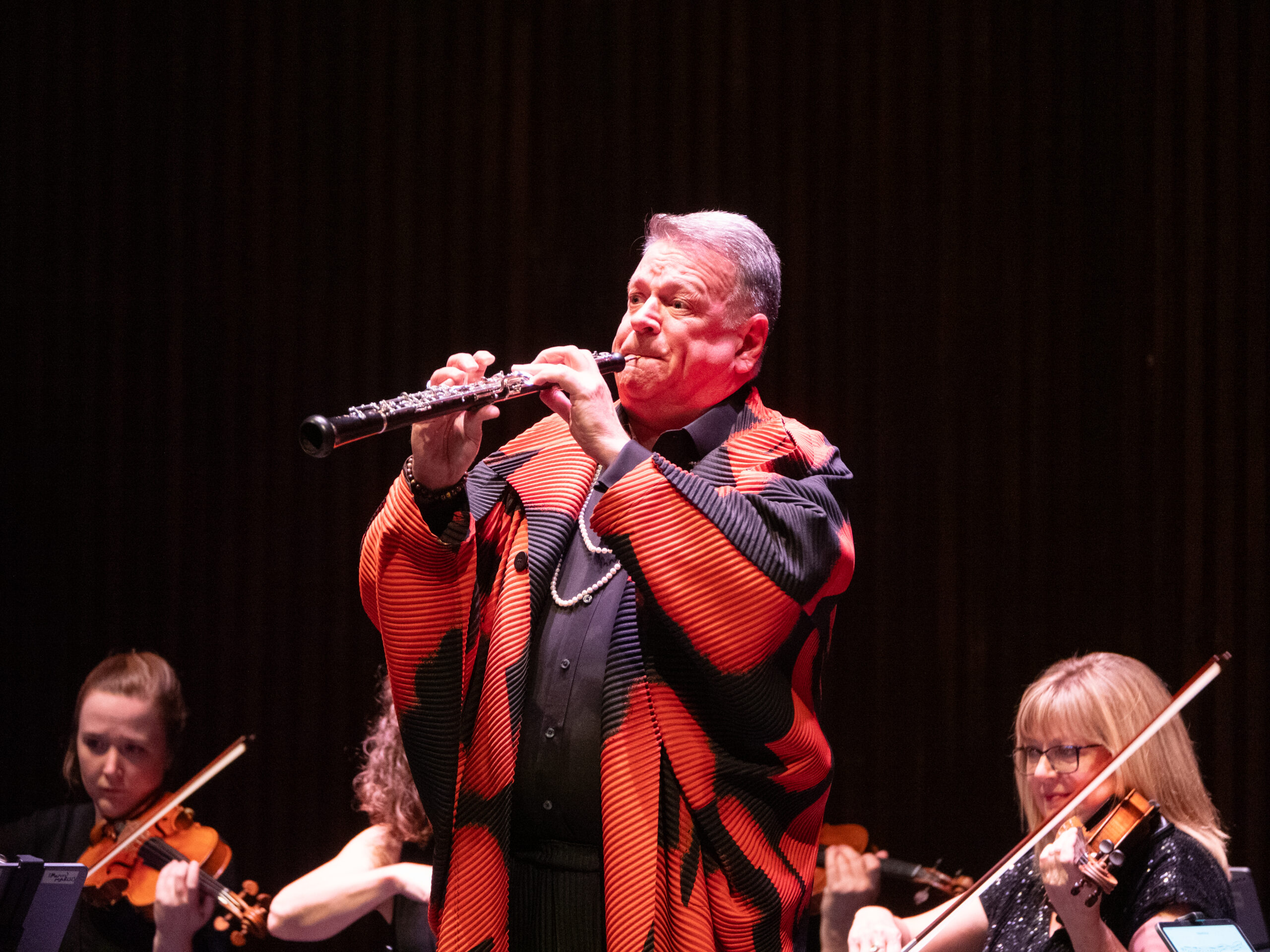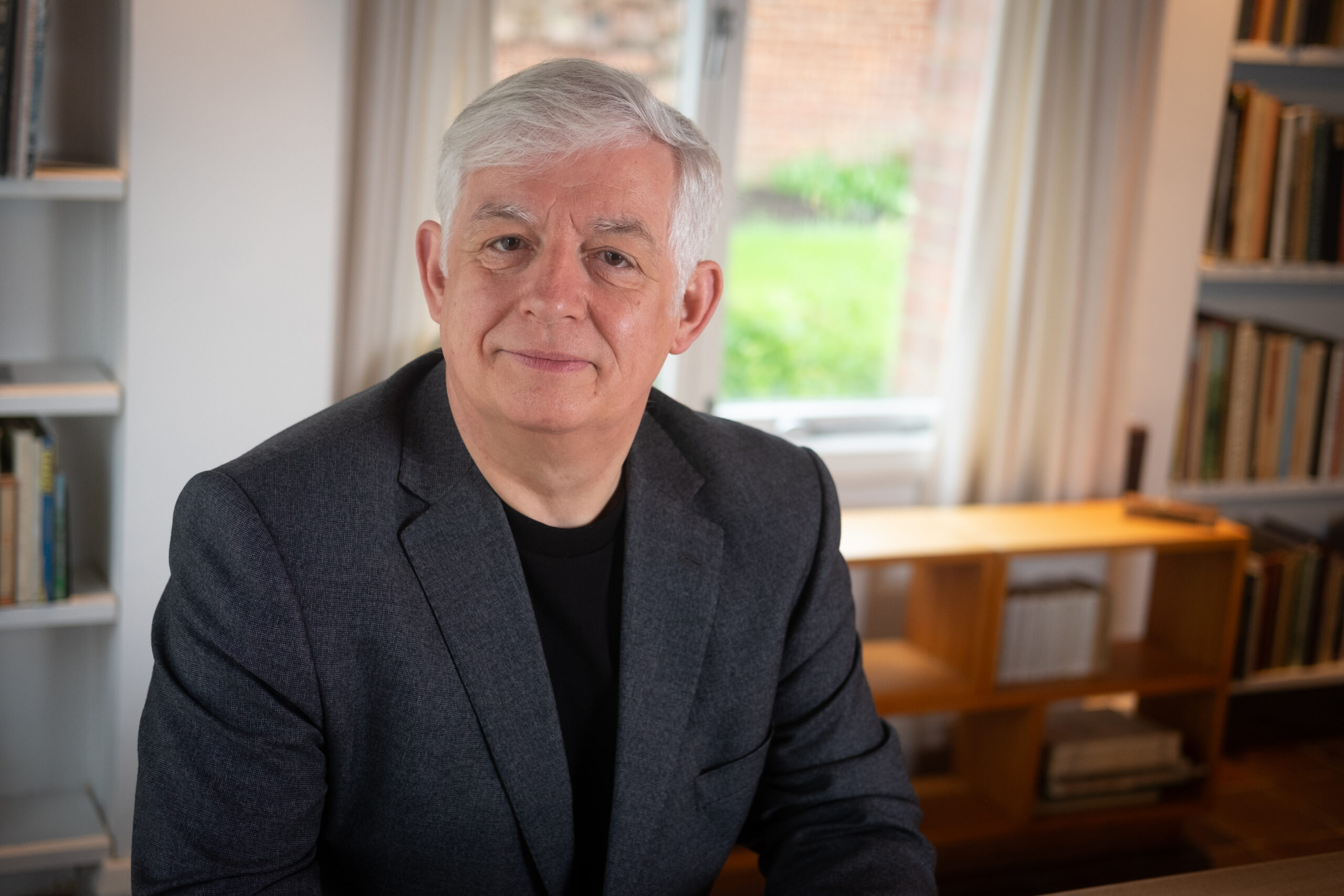In its 40th year celebrations Sheffield Chamber Music Festival has been exploring its origins, celebrating the festival’s founding ensemble, the Lindsay String Quartet, testament to how a local audience was established, and subsequently sustained long after the group disbanded.
Much of that was evident in the trip down memory led by last remaining member, viola player Robin Ireland who joined players from Ensemble 360 for a performance of Mozart’s tumultuous G minor quartet. Ireland introduced the work with an mischievous combination of pride, deference, and self-deprecation, sharing anecdotes from his time playing with the quartet and the festival. One in particular resonated: a festival performance of Mendelssohn’s Octet in the Crucible Playhouse in which Ireland’s father was ‘dragged out of retirement’ to play.
Such personal introductions may seem inconsequential (there had been a similar one the night after when horn player Naomi Atherton credited her bassoonist colleague as her inspiration for playing early on in her career). Yet it is these comments that reveal the human experience behind the seeming wizardry of live music making. In sharing, the performer creates an intimate connection between audience and musician, ramping up the intimacy to almost heady levels making the performance that follows all the more intense.
Such an act perhaps has its roots in the thinking of Lindsay String Quartet first violin, the late Peter Cropper, captured in a BBC Omnibus from 1977 and screened to eager Lindsay Quartet fans earlier this week. Decades before the current furore about connecting with new audiences, Cropper is heard reflecting on his observations about how audiences seemed more engaged when the quartet played concerts in casual clothes. This, playing quartets in pubs and concerts in the round at Victoria Theatre in Stoke-on-the-Trent made the quartet as distinct from their contemporaries as the intense and immediate musical expression that made their name. Sufficient a reputation for the BBC to follow them, capturing their thoughts and reflections back in 1976.
In the short package, the young tea-drinking pipe-smoking Lindsays pulled off a rock-star vibe in no small part down to Cropper’s unconventional physical expressiveness. In both 1970s ‘staged for TV’ rehearsals and the 2005 filmed performance of Haydn string quartets screened after the panel discussion the same intense expression was evident, a magnetism on the big screen that sometimes felt like watching a football match more than a bracing musical expedition.
Reflecting on the Quartet’s work and their impact were Cropper’s wife Nina, manager Charlotte Hill, and Delma Tomlin from the National Centre for Early Music, the appreciation amongst the audience was palpable hinting at the rich bond the quartet’s reputation had formed. It is an achievement readily identified on the faces of fans, and symbolised in both the presence of the chamber music festival to this day and, potently, its ongoing home in the once contentious and hotly opposed Crucible.

That Ensemble 360 players sit on the same chairs in performances today the Lindsays are sometimes pictured with is touching continuity. The same team spirit clear to see in the Saint-Saens programme put together by this year’s Festival curator Steven Isserlis – a range of relatively unheard of works by the French romantic combined with the evergreen Carnival of the Animals, a series of charming variations where every one of the chamber ensemble has their moment in the sun and the opportunity to have a go at a bit of comedy acting.
Same chairs. Different players. Same spirit.
Yet this continuity established by the innovation of the Lindsays 40 years ago, also points to a challenge (or an opportunity) the Festival currently faces. How to honour their founding talent at the same time as inspiring others to discover their scintillating back catalogue? How to build a Festival by drawing on talent that are, by and large, no longer with us? In TV terms that would mean a ‘reboot’ of some kind – a way to reinvigorating an existing brand name to appeal to a new generation. Arguably, the Lindsay’s legacy is embedded in Ensemble 360. Now nearly 20 years old itself, Ensemble 360 play all the concerts at the Chamber Music Festival (no mean feat), plus concert weekends throughout the year totalling 25 concert from Sheffield to and including London.
The opportunity then is perhaps to make the Lindsay’s legacy more evident in the same way that Britten is synonymous with Snape Maltings and Aldeburgh, not simply to celebrate their remarkable music making, but their innovative thinking recognised so early on by the industry.
During the panel discussion members of the audience were invited to share their stories of listening to the Lindsays. One such anecdote recalled a young Cropper telling the audience once in an early concert in the 1960s that ‘there’s only one word you need to know to describe Haydn – that’s joy!‘ – the kind of simplicity marketing copywriters might do well to channel today. At the end of the discussion, another member of the audience makes an announcement extending thanks for putting on an event that stirs so many happy memories for so many people. The enthusiasm is genuine and sincere and consistent with the extended bright applause I’ve heard at concerts.
That the presence of a former player in one concert, a 10 minute documentary package from 1977, and the enthusiasm of a local audience can inspire the exploration of a collection of archive recordings of quartet repertoire says something about what the Lindsays created, and what I missed out on first time around.
Therein the manifestation of what is Thoroughly Good: a present-day event that inspires exploration in pursuit of new discoveries. In this case, a series of concerts and discussions that opens up a hitherto unexplored archive of recordings and writing, which in turn shape thinking in the present. In the digital content space the equivalent mantra recommends surfacing content made in the past, as a way of raising (or maintaining awareness) amongst the audience in the present. It should be no surprise to learn that Sheffield have been doing it for years already. Do more arts organisations need to embrace or even exploit their past a little more? There is surely much to be proud of.



